Tackling deadly threats to nature
Biosecurity priorities for the next Australian government
FEBRUARY 2022

Document Details
Invasive Species Council. 2022. Tackling deadly threats to nature: biosecurity priorities for the next Australian government. February 2022.

ISBN 978-0-6488809-4-3
About the Invasive Species Council
The Invasive Species Council was formed in 2002 to advocate for stronger laws, policies and programs to keep biodiversity safe from weeds, feral animals, exotic pathogens and other invaders. It is a not-for-profit charitable organisation funded predominantly by donations from supporters and philanthropic organisations.
Acknowledgements
We acknowledge the First Australians and pay our respects to their Elders past and present. Effective biosecurity in Australia must harness the deep knowledge and land and sea management skills of Indigenous Australians and facilitate their meaningful involvement in decision-making.
Intellectual property rights
© Invasive Species Council 2022
Unless otherwise noted, copyright and any other intellectual property rights in this publication are owned by the Invasive Species Council.
All material in this publication is licensed under a Creative Commons Attribution-NonCommercial-ShareAlike 4.0 International License. Creative Commons Attribution 4.0 International Licence is a standard form licence agreement that allows you to copy, redistribute, remix, transmit and adapt this publication provided you attribute the work, you do not use it commercially and you distribute your contribution under this creative commons licence. The licence terms are available from https://creativecommons.org/licenses/by-nc-sa/4.0/.
Inquiries
Invasive Species Council
Address: PO Box 818, Katoomba NSW 2780, Australia

ABN: 27 101 522 829 Web: invasives.org.au Email: isc@invasives.org.au
Cover Image: Feral camels in central Australia, one of the many hard-hoofed species now dominating most landscapes.
Photo: Stanislav Fosenbauer/Shutterstock.com
Edmondson
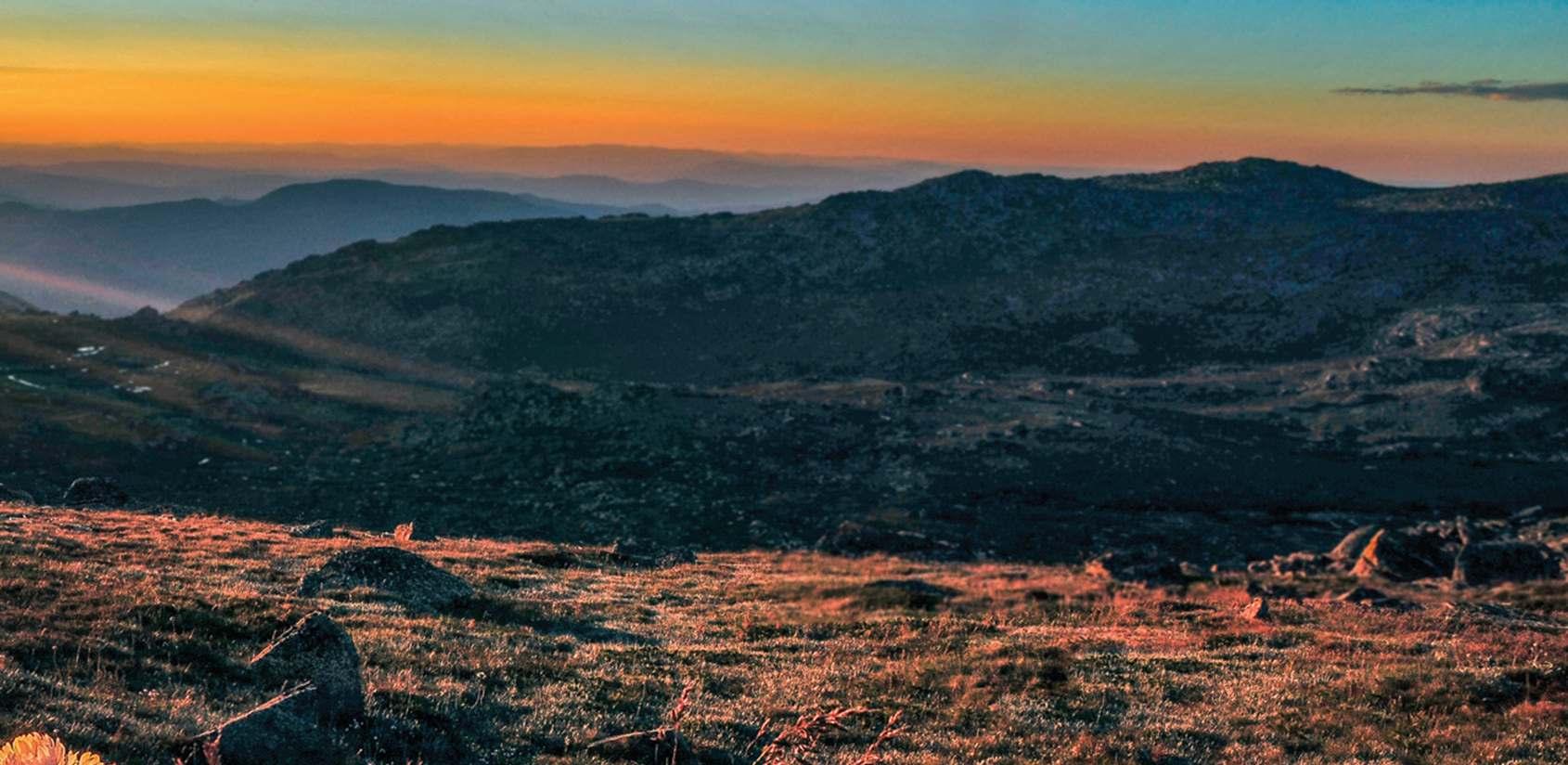
Tackling
1 Australianeedsstrongerenvironmentalbiosecurity 2 1.Strengthenournationalenvironmentalbiosecuritysystem 4 2.Strengthenlaws,policiesandprogramstotacklethe bigthreatstonature 6 3.Tacklesomeofourmostdamaginginvasivethreats 8 4.Investinbiosecurityresearchandinnovation 10 5.Createinvasive-freeislands 12 Table of Contents
deadly threats to nature. Biosecurity priorities for the next Australian government.
National parks are vital for saving threatened species, but species will still disappear unless we get much better at controlling major invasive threats. Here, in Kosciuszko National Park, burgeoning feral horse populations have been trashing the park since the NSW Government legislated to protect horses rather than control them to protect the park’s fragile ecosystems and unique endangered species such as corroboree frogs. See reclaimkosci.org.au.
Photo: Mike
Australia needs stronger environmental biosecurity
COVID-19 has taught the world a lesson about invasive species – their ability to spread, create havoc in unexposed populations and evolve to exploit our vulnerabilities.
As an island nation with a trove of unique wildlife that evolved in isolation from the rest of the world, Australia has proved highly susceptible to biological invasions. They have caused the majority of species extinctions over the past 230 years and remain the highest impact threat.
Our mega-biodiverse country – one of only a few on the planet – is in the grips of an extinction crisis. Since 2009, 3 unique animals have been wiped out and 2 others lost from the wild. Four of these recent extinctions were due to invasive species. Hundreds more native species, including more than half our nationally listed threatened species, are imperilled by invasive species. The economic costs of invasive species are also staggering – an estimated $25 billion a year, more than 1% of Australia’s GDP.
For such reasons, strengthening biosecurity – stopping new invasive species arriving and establishing and limiting the harm caused by established invaders – must be an Australian government priority of the highest order.
While stopping invasive species is often difficult, past achievements show that with dedication and resources, Australia can achieve world-leading results. We have, for example, eradicated several red fire ant populations, as well as rats and cats from many islands, and beaten back terrible weeds through biocontrol or concerted removal (bitou bush, sea spurge and prickly pear, for example). So far, we’ve been able to keep out destructive new invaders such as the Asian black-spined toad, giant African snail and wattle rusts.
But in many places invasive species are running riot. To protect and restore Australia’s ecosystems, we need a more concerted effort to tackle the likes of feral cats, yellow crazy ants, carp, myrtle rust, gamba grass and hard-hoofed invaders such as feral deer and horses. We also need stronger, more collaborative, better funded biosecurity to prevent and eradicate new invaders and stop the spread of others.
Extinction is a choice – a choice expressed in the laws passed by governments, the money invested in protection or destruction and the actions we all take. Collectively, Australians can choose to ensure that Australia’s unique species persist and thrive.
In this document, we outline initiatives and policies to improve Australia’s capacity to keep nature safe from new and established invasive species. It is not a simple task – it will take concerted action and an ambitious, long-term vision shared by all parts of society, with strong leadership by our national government.
Environmental biosecurity priorities
1. Strengthen our national environmental biosecurity system
1.1 Support the 2021-2030 Decade of Biosecurity initiative proposed by major national industry, environmental and NRM groups and guarantee long-term Commonwealth funding for the implementation of a collaboratively developed national biosecurity strategy.
1.2 Systematically assess, identify and address high-risk pathways for environmental invasive species and undertake contingency planning for all high-priority environmental biosecurity risks over a 10-year timeframe.
1.3 Triple the resources available to the Commonwealth Chief Environmental Biosecurity Officer to adequately plan for, and respond to, established and emerging biosecurity risks.
1.4 Establish an independent panel to develop new models for financing biosecurity measures and responses.
1.5 Establish a productivity commission inquiry into the economic and environmental benefits of Australia’s biosecurity system and prevention and early action on addressing invasive species.
1.6 Ensure Australia is on target to exceed its global targets for managing invasive species, including targets under the UN Convention on Biological Diversity.
2
From feral cats to toxic toads, choking weeds, deadly fungi and armies of ants, Australia is in the grip of an unprecedented attack on our native wildlife, environment and way of life.
CSIRO
2. Strengthen laws, policies and programs to tackle the big threats to nature
(2021)1
2.1 Commit to preventing extinctions by significantly increasing investments in threat abatement and the recovery of threatened species.
2.2 Commit to introducing strong outcomes-based national environmental standards and independent oversight as part of a full response to the Independent Review of the EPBC Act.
2.3 Reform planning instruments under the EPBC Act to ensure that key threats to nature are systematically assessed and listed, and abated through national and regional planning processes.
2.4 Add a key threatening process trigger to Australia’s environmental laws to require assessment of activities that are likely to exacerbate listed key threatening processes.
2.5 Ensure new regional plans account for, and adequately resource, the retention and restoration of priority biodiversity areas with a strong focus on active management and control of invasive species.
3. Tackle some of our most damaging invasive threats
3.1 Develop national plans, with funding for implementation, to abate the threats of hard-hoofed invaders, including feral deer, horses, camels and goats.
3.2 Invest $27.6 million over 6 years to eradicate yellow crazy ants in the Cairns and Townsville regions.
3.3 Address the devastating impacts of cats on native wildlife in Australia by implementing all 6 recommendations of the parliamentary inquiry into feral and domestic cats in Australia.
3.4 Commit to revising the northern Australian pasture grass threat abatement plan, with dedicated funding for controlling invasive gamba grass.
3.5 Commit to using national environmental law to safeguard the Australian Alps from the impacts of feral horses.
3.6 Establish independent governance for, and adequately fund, the program to eradicate red fire ants from southeast Queensland by 2027
3.7 Provide funds to support the eradication of feral deer from the Tasmanian Wilderness World Heritage Area.
4. Invest in biosecurity research and innovation
4.1 Commit to fully implementing the National Environment and Community Biosecurity Research, Development and Extension (RD&E) Strategy 2021-2026, with a strong focus on solving difficult highpriority problems and applying emerging technologies.
4.2 Expand the role of the Centre for Invasive Species Solutions so that it becomes a permanent body that conducts research across all categories of invasive species and all stages of invasion with a strong emphasis on environmental biosecurity.
4.3 Invest in Australia’s capacity for rapid identification of exotic species including the maintenance of validated reference collections for biosecurity risk groups in Australia's national biological collections (CSIRO, state and territory museums and herbaria).
5. Create invasive-free islands
5.1 Establish a national islands recovery program that fast-tracks eradications of high-impact invasive species,, strengthens biosecurity and coordinates recovery efforts for Australia's offshore islands.
Tackling deadly threats to nature. Biosecurity priorities for the next Australian government.
3
1 Sheppard A, Glanznig A (2021). Fighting plagues and predators: Australia’s path towards a pest and weed-free future. CSIRO
1. Strengthen our national environmental biosecurity system
Current situation
Environmental biosecurity is the protection of Australia’s natural environment from the harmful impacts of invasive species. It operates across the ‘invasion curve’ – from prevention and eradication of new and emerging invaders to the containment and management of the most harmful species.
Australia’s biosecurity system is under increasing strain. A 2017 independent review led by Dr Wendy Craik found that risks from new invasive plants, animals and diseases are growing and that Australia is underprepared for looming challenges. It found that environmental biosecurity, in particular, lacks systematic identification and prioritisation of biosecurity risks and planning to address those risks. The community, which bears the costs of an expanding number of harmful invaders, wants more of a say in biosecurity policies and priorities.
Opportunity
A national biosecurity strategy — one owned and implemented by all stakeholders — is an important foundation to build a stronger and more collaborative biosecurity system to protect the environment and all other aspects of our lives — our economy, agriculture, tourism and our way of life.
To more effectively tackle existing threats and be better prepared for new threats, the environmental biosecurity system must be better resourced, meaningfully involve the community and systematically prevent and eradicate new and emerging threats. As the 2017 national review noted, there is an ‘increasing expectation that environmental biosecurity should be on an equal footing with animal and plant biosecurity’.
Actions needed
The next Australian Government should:
1.1 Support the 2021-2030 Decade of Biosecurity initiative proposed by major national industry, environmental and NRM groups and guarantee longterm Commonwealth funding for the implementation of a collaboratively developed national biosecurity strategy.
1.2 Systematically assess, identify and address high-risk pathways for environmental invasive species and undertake contingency planning for all high-priority environmental biosecurity risks over a 10-year timeframe.
1.3 Triple the resources available to the Commonwealth Chief Environmental Biosecurity Officer to adequately plan for,
and respond to, established and emerging biosecurity risks.
1.4 Establish an independent panel to develop new models for financing biosecurity measures and responses.
1.5 Establish a productivity commission inquiry into the economic and environmental benefits of Australia’s biosecurity system and prevention and early action on addressing invasive species.
1.6 Ensure Australia is on target to exceed its global targets for managing invasive species, including targets under the UN Convention on Biological Diversity.
4
The Asian hornet has recently invaded Europe and is one of many potential invasive insects we must try to keep out of Australia. It could travel here as a stowaway with imported timber, machinery, vehicles and organic packing material. As a generalist predator, it could threaten native insects, particularly bees and wasps, if it reaches Australia.
 Photo: Philippe Garcelon (Flickr / CC CC BY-NC-SA 2.0)
Photo: Philippe Garcelon (Flickr / CC CC BY-NC-SA 2.0)
A resilient and responsive national biosecurity system has never been more important. Between 2012 and 2017, the annual number of interceptions of biosecurity risk materials at Australian borders rose by almost 50%, to 37,014.
CSIRO (2021)2
5
Tackling deadly threats to nature. Biosecurity priorities for the next Australian government.
2 Jarrett L, Williams G, Charnock S. (2020). Australia's biosecurity future: Unlocking the next decade of resilience. CSIRO.
2. Strengthen laws, policies and programs to tackle the big threats to nature
Current situation
Australia’s national environmental law, the Environment Protection and Biodiversity Conservation Act, is neither effective nor efficient. That is the assessment of the independent review of the EPBC Act by Professor Graeme Samuel in 2021. The general consensus is that the law is poorly equipped to tackle the major environmental challenges we currently face – hampered by ad-hoc, rather than systematic, approaches to assessing and dealing with major threats to nature and failing to specify the outcomes Australia needs to achieve.
The EPBC Act has failed to arrest the decline in Australia’s biodiversity. Some of the major threats are not even listed (it has been almost a decade since a key threatening process was listed), many do not have threat abatement plans and most plans are poorly implemented. There is a lack of monitoring and no regular reporting on progress. Threat abatement has been plagued by too little funding and lack of prioritisation.
Opportunity
The Samuel review provides a pathway for reform – a new system of environmental governance built on strong national environmental standards and a national planning system focussed on tackling major threats to nature while enacting measures for species recovery. Unfortunately, most review recommendations remain in stasis, despite being backed by environmental and industry groups alike.
Reforming our national environmental law presents a significant opportunity to systematically address the key threats to nature in Australia. It also presents an opportunity to move from reactive government regulation to proactive conservation planning for the protection and restoration of biodiversity, consistent with the objectives of the UN Decade on Ecosystem Restoration. With the blueprint for reform laid out in the Samuel review, we now need a committed government to fully implement the measures needed to overcome major threats to nature and put Australia’s environment on a path to recovery.
Actions needed
The next Australian Government should:
2.1 Commit to preventing extinctions by significantly increasing investments in threat abatement and the recovery of threatened species.
2.2 Commit to introducing strong outcomesbased national environmental standards and independent oversight as part of a full response to the Independent Review of the EPBC Act.
2.3 Reform planning instruments under the EPBC Act to ensure that key threats to nature are systematically assessed and listed, and abated through national and regional planning processes.
2.4 Add a key threatening process trigger to Australia’s environmental laws to require assessment of activities that are likely to exacerbate key listed threatening processes.
2.5 Ensure new regional plans account for, and adequately resource, the retention and restoration of priority biodiversity areas with a strong focus on active management and control of invasive species.
6
Independent review of the EPBC Act (2020)3
The fate of the numbat, listed nationally as endangered, depends on intensive control of feral cats and foxes as well as effective management of fire.
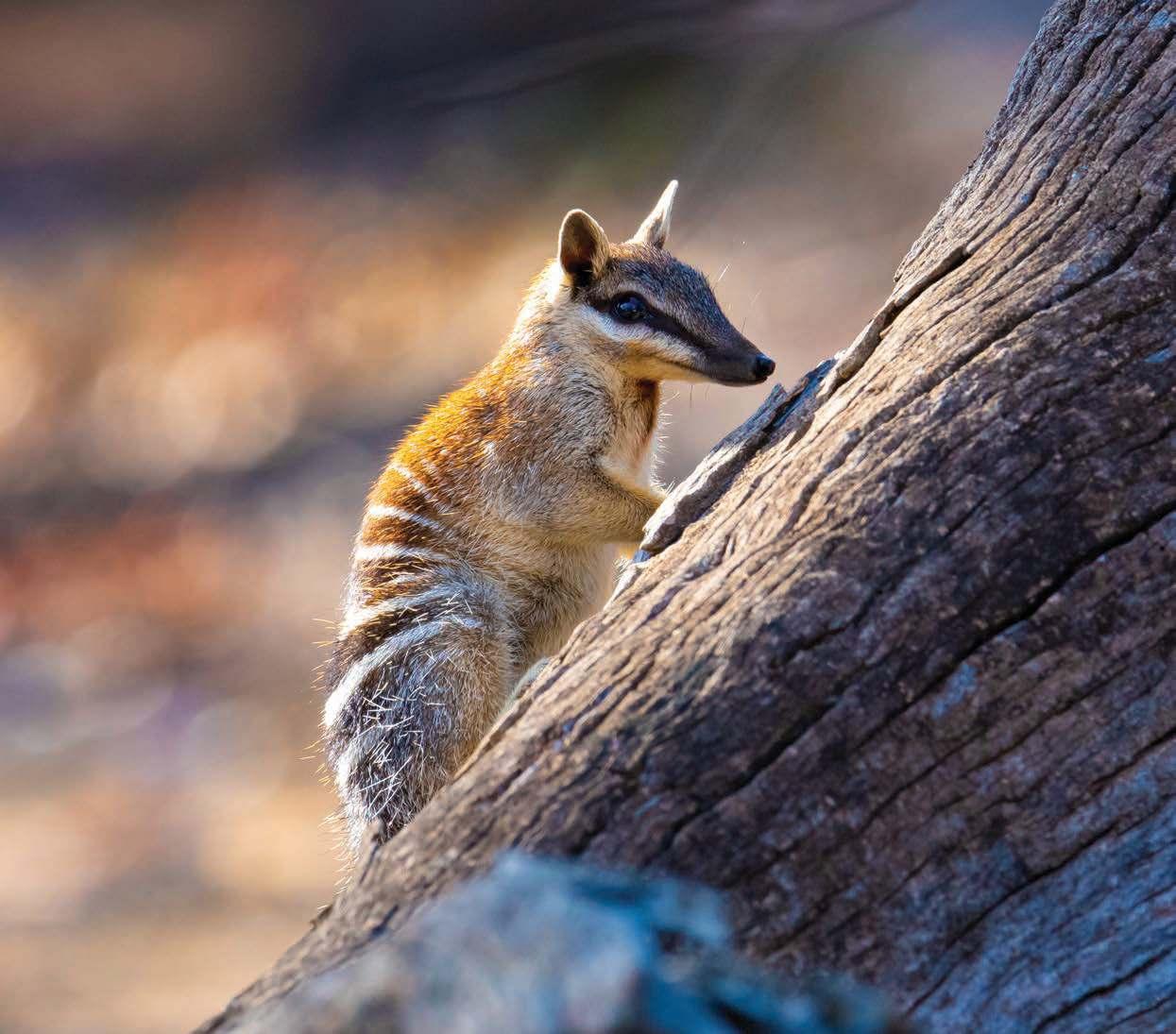
Photo: Bruce Thomson
To stop extinctions and recover threatened species, Australia needs to tackle these 4 mega-threats: invasive species, habitat loss, adverse fire regimes and climate change.
Photos (L to R): Charlie Marshall (Flickr / CC BY 2.0), Jeremy Buckingham (Flickr / CC BY 2.0), Sascha Grant (Flickr / CC BY-NC-ND 2.0), Edgar Crook (Flickr / CC BY-NC 2.0)
3 Samuel G. (2020). Independent review of the EPBC Act – final report. Australian Government Department of Agriculture, Water and the Environment.
Tackling deadly threats to nature. Biosecurity priorities for the next Australian government. 7

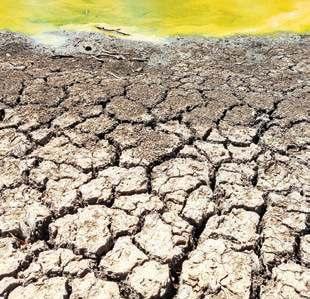


To shy away from the fundamental reforms recommended by this Review is to accept the continued decline of our iconic places and the extinction of our most threatened plants, animals and ecosystems.
3. Tackle some of our most damaging invasive threats
Current situation
A huge variety of introduced plants, animals and diseases are threatening Australia’s wildlife and degrading our landscapes. They impact more than 40% of nationally threatened species to a high or moderate degree – more than any other threat.
Hard-hoofed invasives, like feral deer and feral horses, are causing massive degradation of sensitive ecosystems across Australia. Feral deer, still partly protected in some places, are spreading deeper into Tasmania’s Wilderness World Heritage Area, and more than 14,000 feral horses are trashing the Australian Alps, a nationally listed landscape home to endangered species such as corroboree frogs. Feral cats and foxes, the major cause of Australia’s mammal extinctions, continue to prey on threatened species. And gamba grass is fuelling fierce fires in northern Australia, converting woodlands to grassy monocultures.
Opportunity
To protect native wildlife, landscape health and the industries that rely on this, Australia needs to substantially bolster efforts to tackle major invasive threats.
The federal government has a key role in driving action – including through its planning functions under the EPBC Act and its capacity to fund programs. Investing in threat abatement planning to drive the research and actions to systematically tackle invasive species threats is essential for solving Australia’s extinction crisis. The federal government also has the capacity to use environmental law to ensure matters of national environmental significance, such as Kosciuszko National Park and the Australia Alps, are effectively managed. And for a few invasive species, such as yellow crazy ants in north Queensland and red fire ants near Brisbane, we still have a window of opportunity to remove them completely from the landscape.
The threat to Australia's natural environment from invasive species is huge. The following proposals represent some of the highest priority actions needed.
Actions needed
The next Australian Government should:
3.1 Develop national plans, with funding for implementation, to abate the threats of hard-hoofed invaders, including feral deer, horses, camels and goats.
3.2 Invest $27.6 million over 6 years to eradicate yellow crazy ants in the Cairns and Townsville regions.
3.3 Address the devastating impacts of cats on native wildlife by implementing all 6 recommendations of the parliamentary inquiry into feral and domestic cats in Australia.
3.4 Commit to revising the northern Australian pasture grass threat abatement plan, with dedicated funding for controlling invasive gamba grass.
3.5 Commit to using national environmental law to safeguard the Australian Alps from the impacts of feral horses.
3.6 Establish independent governance for, and adequately fund, the program to eradicate red fire ants from southeast Queensland by 2027.
3.7 Provide funds to support the eradication of feral deer from the Tasmanian Wilderness World Heritage Area.
8
Feral horses trample sensitive alpine wetlands in Kosciuszko National Park. The population of feral horses in the park has exploded to more than 14,000. This is largely thanks to NSW legislation passed in 2018 that protects this highly damaging invasive species in one of Australia's most fragile environments.
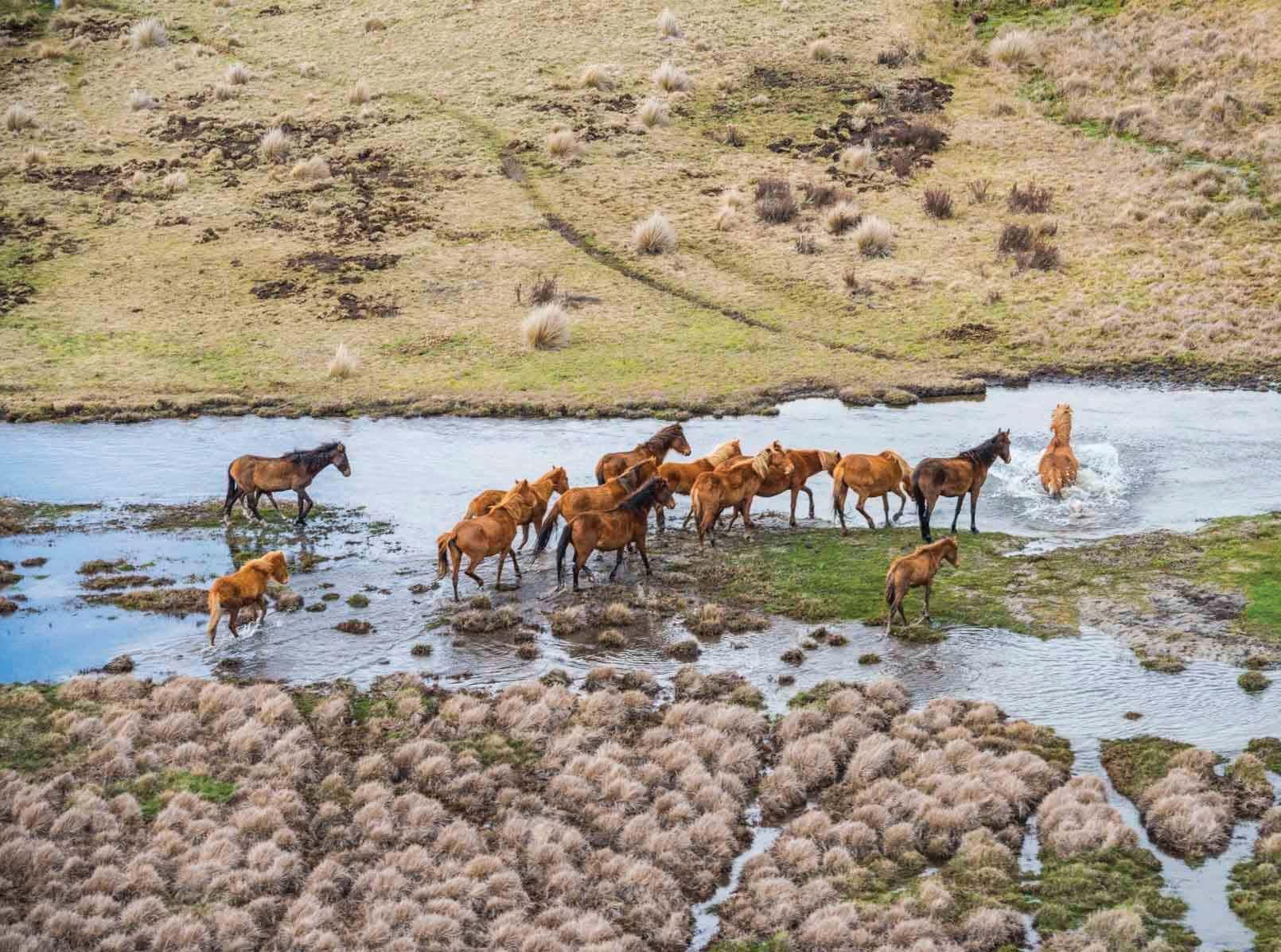
There is unequivocal evidence that feral horses are the single largest cause of widespread environmental degradation throughout their range in the alpine parks, even at low densities, and are a threat to many native species. … Stream banks are being eroded, streams are becoming silted, and bogs and fens that take millennia to form are being destroyed.
4 Driscoll DA, Worboys GL, Allan H, et al. (2019). Impacts of feral horses in the Australian Alps
evidencebased solutions. Ecological Management & Restoration 20(1): 63-72.
Tackling deadly threats to nature. Biosecurity priorities for the next Australian government. 9
and
Don Driscoll and others (2019)4
4. Invest in biosecurity research and innovation
Current situation
Australia needs a big research effort in environmental biosecurity. The challenges are immense – we don’t yet know what the biggest new risks are and how to stop them getting here, and we’re losing ground against many weeds, diseases and invasive animals because we lack effective control methods. Taxonomic capacity in Australia has declined, undermining our ability to respond rapidly to new threats. A 5-year research plan in environmental biosecurity expired in 2019 without having been implemented. A new 5-year plan has been developed but lacks a funding commitment.
Opportunity
History shows that Australia can overcome big problems through research and innovation – we used to lead the world in biological control – epitomised by the moth that beat back prickly pear and the viruses that keep rabbits from eating the land bare – and promising new methods for controlling the likes of cats, carp and deer are in the pipeline.
Innovation is needed to deal with the most difficult problems, and to foster this we need to long-term grants for promising ideas. A proportion of biosecurity research funding – we suggest at least 20% – should be dedicated to cracking the biggest challenges of environmental biosecurity. A permanent research body is needed to drive the long-term research effort needed to solve Australia's biggest invasion problems. This will be highly cost-effective because their impacts are so environmentally and economically costly.
Actions needed
The next Australian Government should:
4.1 Fully implementing the National Environment and Community Biosecurity Research, Development and Extension (RD&E) Strategy 2021-2026, with a strong focus on solving difficult highpriority problems and applying emerging technologies.
4.2 Expand the role of the Centre for Invasive Species Solutions so that it becomes a permanent body that conducts research across all categories of invasive species and all stages of invasion with a strong emphasis on environmental biosecurity.
4.3 Invest in Australia’s capacity for rapid identification of exotic species including the maintenance of validated reference collections for biosecurity risk groups in Australia's national biological collections (CSIRO, state and territory museums and herbaria).
10
Research to investigate the ecology of biological invasions and to develop effective detection and control methods is fundamental to abating major threats to Australian biodiversity.
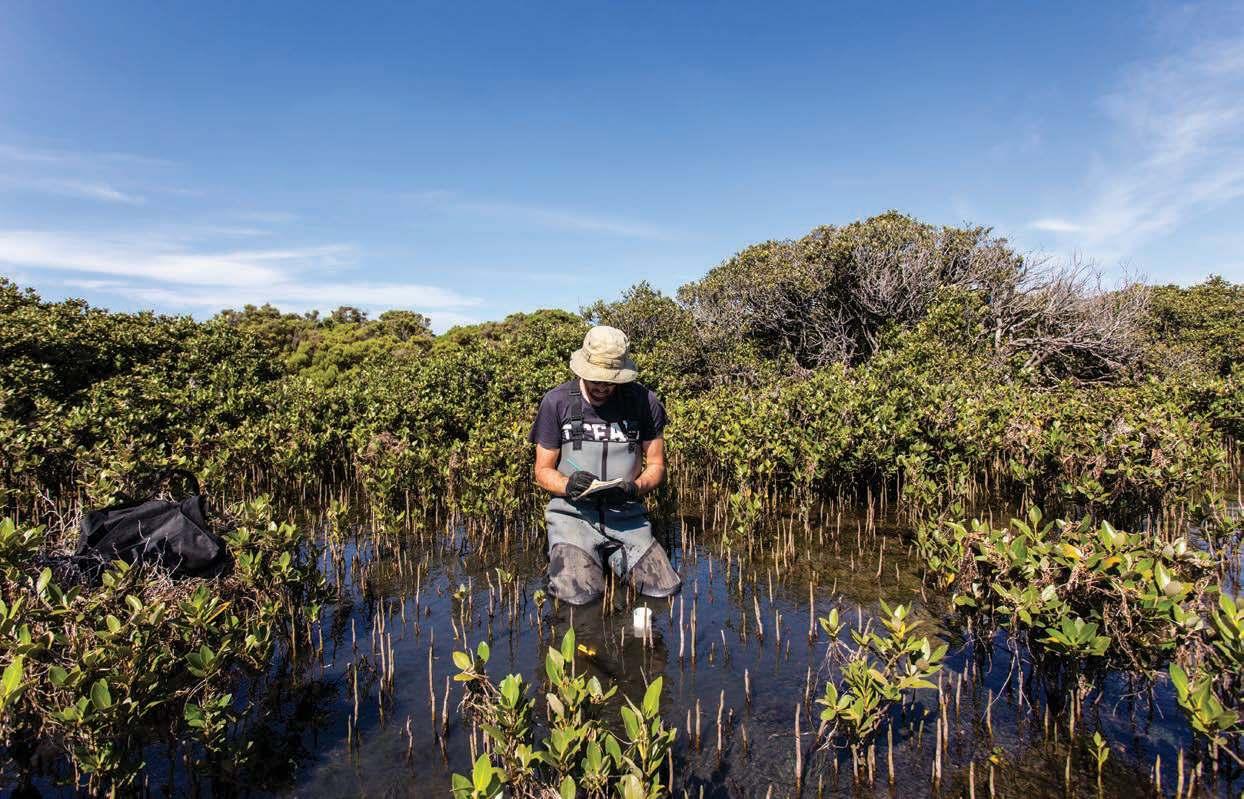
An innovation-centred transformation of the national biosecurity system is required that in the longer term shifts finite skills and resources from tactical response to strategic investment.
Centre for Invasive Species Solutions (2020)5
Australia needs a technological leap to develop more effective methods for control of vertebrate animals – methods that are target-specific, affordable, deployable at scale and humane.
Tackling deadly threats to nature. Biosecurity priorities for the next Australian government. 11
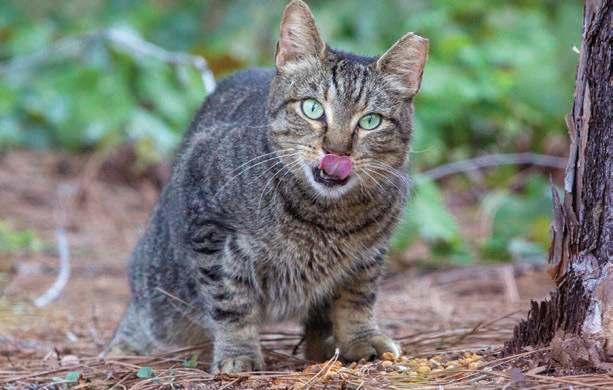 5 Begley C, Rainbow R, Younus F. (2020). Invasive species solutions 2030: Overview of technology opportunities. Centre for Invasive Species Solutions.
Photo: I. Noyan Yilmaz / Shutterstock.com
Photo: Dennis Church (Flickr / CC BY-NC-ND 2.0)
5 Begley C, Rainbow R, Younus F. (2020). Invasive species solutions 2030: Overview of technology opportunities. Centre for Invasive Species Solutions.
Photo: I. Noyan Yilmaz / Shutterstock.com
Photo: Dennis Church (Flickr / CC BY-NC-ND 2.0)
5. Create invasive-free islands
Current situation
Australia’s islands have been centres of extinction, mostly due to invasive species. Despite making up less than 0.5% of Australia’s land area (not counting Tasmania), they account for almost a third of Australia’s extinctions, including 3 since 2009. They also harbour a disproportionate number of threatened species, including some of the rarest, such as the Norfolk Island green parrot and the King Island thornbill. While the isolation of islands gives rise to unique and unusual species, it also makes them highly vulnerable to harm from introduced species. Having evolved with far fewer competitors and predators than species on continents, island wildlife often have poor defences against invaders. And biosecurity on islands is often neglected.
But islands also offer excellent opportunities to recover threatened species because of the potential to eradicate invasive species – to protect surviving local populations and species threatened on the mainland. About 100 islands are now havens for 38 threatened mammal taxa susceptible to predation by cats and foxes, including several that are extinct on the mainland.
Opportunity
The eradication of invasive species on islands has been one of Australia’s greatest conservation successes –with the achievement of about 250 eradications on more than 150 islands of 18 introduced species (mainly black rats, goats, rabbits, cats, foxes and pigs). Recent eradications, among the largest in the world, on sub-Antarctic Macquarie Island and Western Australia’s Dirk Hartog Island, both World Heritage sites, show what can be achieved. An even greater effort will yield enormous benefits for Australian biodiversity. Island eradications offer one of the best returns on conservation investment, because of the capacity to prevent re-invasion – but it is essential to safeguard islands by strengthening biosecurity. A Senate inquiry into environmental biosecurity in 2015 recommended that the federal government work with states and territories to establish a national framework for managing biosecurity on Australia’s islands.
Actions needed
The next Australian Government should:
5.1 Establish a national islands recovery program that fast-tracks eradications of high-impact invasive species,, strengthens biosecurity and coordinates recovery efforts for Australia's offshore islands.
12
As with islands elsewhere, the isolation of the Norfolk Island group has given rise to a highly endemic flora and fauna, whose species are highly susceptible to decline when that isolation is breached by humans and human-introduced species. Fifty-eight Norfolk species, most found nowhere else, are listed as threatened and mostly imperilled by invasive species. Much stronger biosecurity is needed to save these species from existing and future invaders.
 Photo: Danny Hayes
Photo: Danny Hayes
[I]slands are a crucible for radiation of species, but also such risky places that they readily become biodiversity graveyards. With small populations and low genetic variability, island species may have little resistance to new diseases, the plants may have few defences against introduced herbivores and the animals may be naive to new predators.
13
Tackling deadly threats to nature. Biosecurity priorities for the next Australian government.
6 Woinarski J, Garnett S, Lindenmayer D, Legge S. (2017). Green probe: Learning from loss. Wildlife Australia 54 (1) 22-24.& Restoration 20(1): 63-72.
John Woinarski and others (2017)6




 Photo: Philippe Garcelon (Flickr / CC CC BY-NC-SA 2.0)
Photo: Philippe Garcelon (Flickr / CC CC BY-NC-SA 2.0)







 5 Begley C, Rainbow R, Younus F. (2020). Invasive species solutions 2030: Overview of technology opportunities. Centre for Invasive Species Solutions.
Photo: I. Noyan Yilmaz / Shutterstock.com
Photo: Dennis Church (Flickr / CC BY-NC-ND 2.0)
5 Begley C, Rainbow R, Younus F. (2020). Invasive species solutions 2030: Overview of technology opportunities. Centre for Invasive Species Solutions.
Photo: I. Noyan Yilmaz / Shutterstock.com
Photo: Dennis Church (Flickr / CC BY-NC-ND 2.0)
 Photo: Danny Hayes
Photo: Danny Hayes